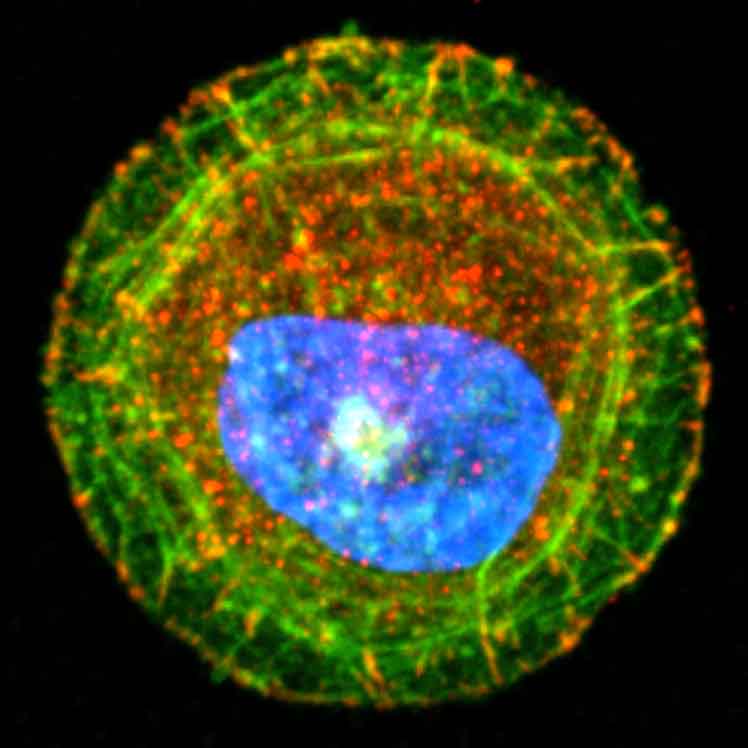
Spatial coordination between cell and nuclear shape within micropatterned endothelial cells.
M. Versaevel, T. Grevesse and S. Gabriele
Nature Communications 3, 671 (2012) [Accès à la revue]
A l'aide de micropochoirs de protéines, de mesures de force et d'imagerie confocale, cet article tente de décrire le mécanisme de régulation mécanique de la forme du noyau de cellules endothéliales en réponse à leurs modifications de morphologie. Des résultats quantitatifs démontrent ensuite les conséquences dramatiques de la régulation de la morphologie du noyau sur l'état de compaction de la chromatine et la prolifération cellulaire.
Abstract: Growing evidence suggests that cytoplasmic actin filaments are essential factors in the modulation of nuclear shape and function. However, the mechanistic understanding of the internal orchestration between cell and nuclear shape is still lacking. Here we show that orientation and deformation of the nucleus are regulated by lateral compressive forces driven by tension in central actomyosin fibres. By using a combination of micro-manipulation tools, our study reveals that tension in central stress fibres is gradually generated by anisotropic force contraction dipoles, which expand as the cell elongates and spreads. Our findings indicate that large-scale cell shape changes induce a drastic condensation of chromatin and dramatically affect cell proliferation. On the basis of these findings, we propose a simple mechanical model that quantitatively accounts for our experimental data and provides a conceptual framework for the mechanistic coordination between cell and nuclear shape.
Thème : Thème 2011-2014 : Mécanique, adhésion et motilité
Equipe : Cell Mechanics (InFluX)
